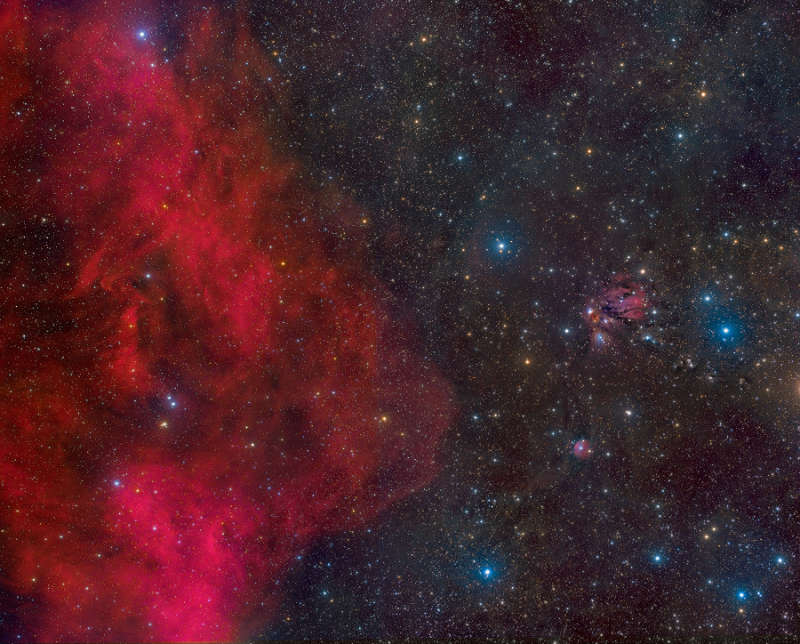Credit & Copyright: John Davis
Explanation:
A gaze across a cosmic skyscape, this telescopic mosaic reveals the
continuous
beauty of things that are.
The evocative scene spans some 6 degrees or 12 Full Moons in
planet Earth's sky.
At the left, folds of red, glowing gas are
a small part of an immense, 300 light-year wide arc.
Known as Barnard's loop,
the structure is too faint to be seen with the eye,
shaped by long gone supernova explosions and
the winds from massive stars, and
still traced by the light of hydrogen atoms.
Barnard's loop lies about 1,500 light-years away
roughly centered on the Great Orion Nebula,
a stellar nursery along the edge of Orion's molecular clouds.
But beyond lie other fertile star fields in the plane of our
Milky Way Galaxy.
At the right, the long-exposure composite finds
NGC 2170, a dusty complex of nebulae
near a neighboring
molecular cloud some 2,400 light-years distant.
1999 2000 2001 2002 2003 2004 2005 2006 2007 2008 2009 2010 2011 2012 2013 2014 2015 2016 2017 2018 2019 2020 2021 2022 2023 2024 2025 |
Январь Февраль Март Апрель Май Июнь Июль Август Сентябрь Октябрь Ноябрь Декабрь |
NASA Web Site Statements, Warnings, and Disclaimers
NASA Official: Jay Norris. Specific rights apply.
A service of: LHEA at NASA / GSFC
& Michigan Tech. U.
|
Публикации с ключевыми словами:
emission nebula - эмиссионная туманность
Публикации со словами: emission nebula - эмиссионная туманность | |
См. также:
Все публикации на ту же тему >> | |
